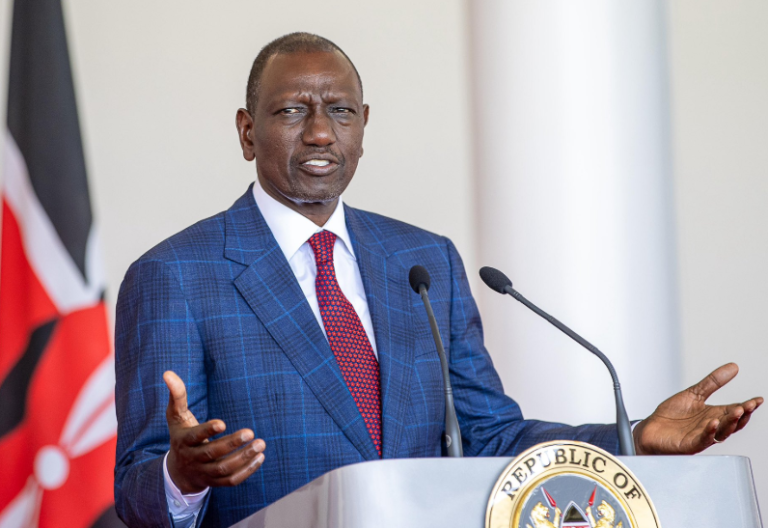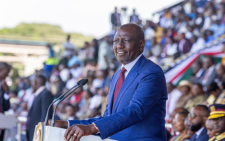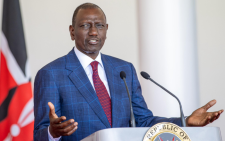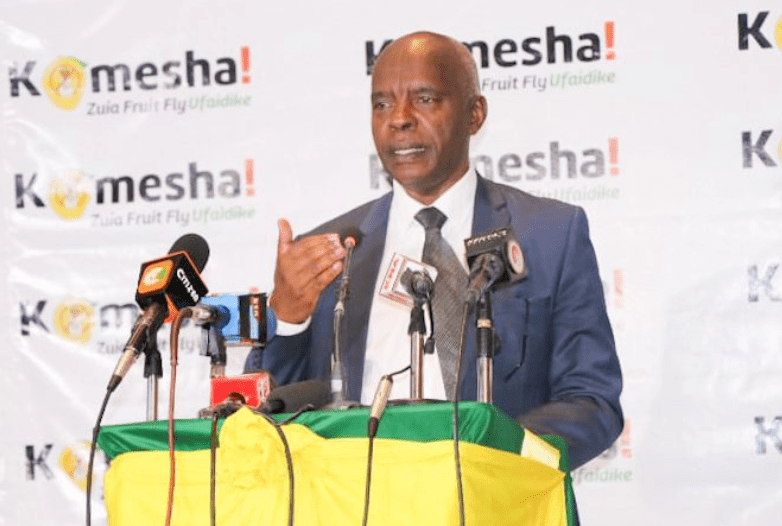Blow to Ruto as economy slows, less job creation in the last year

The national economic growth slowed down in the last one year from 5.7 per cent and an equivalent of Sh16.2 trillion in 2023, dropping by 4.7 per cent to Sh15 trillion in 2024.
Sectors that thrived include agriculture, forestry and fishing with 4.6 per cent, financial and insurance activities with 7.6 per cent, transport and storage with 4.4 per cent and real estate with 5.3 per cent.
According to the Kenya National Bureau of Statistics (KNBS) 2025 Economic Survey, a total of 782,300 new jobs were created in the economy in 2024 compared to 848,200 jobs created in 2023, with the modern sector accounting for a total of 78,600 jobs in 2024.
There was a drop in new jobs in the informal sector that created 703,700 new jobs compared to 720,900 in 2023, accounting for 90 per cent of all new jobs created, excluding small-scale agriculture.
However, the informal sector remained the largest source of jobs with 17.4 million employees and accounting for 83.6 per cent compared to formal employment with a meagre 3.4 million, an equivalent of 16.4 per cent job market share.
National Treasury Cabinet Secretary John Mbadi, while launching the report attributed the slowed economic growth to constrained fiscal space, high interest rates, social-economic upheavals related to the Gen-Z protests of June last year and effects of erratic weather conditions.
“These extreme weather conditions have negatively impacted our economic growth, and of course, the trade wars (among developed countries), which are affecting global trade,” Mbadi said.
KNBS data shows that the Gross National Disposable Income increased to Sh16.9 trillion in 2024 from Sh15.75 trillion in 2023 while GDP per capita increased from Sh291,770 in 2023 to Sh309,460 in 2024.
Additionally, employment in the modern and informal sectors, excluding small-scale agriculture, went up from 20 million in 2023 to 20.8 million in 2024.
In both the private and public sectors, there was an increase in annual wage bill, with the private sector spending the lion’s share, approximately Sh2.11 trillion on salaries, compared to the public’s Sh881.4 billion.
The areas that provided the highest employment numbers in private sector were manufacturing (347,294), agriculture, forestry and fishing (308,865), accounting for 15.9 per cent and 14.1 per cent, respectively.
Other areas in the private sector with high employment rates were wholesale and retail trade and motor vehicle repair shops with 276,127 jobs, education with 242,536 and the building industry with 223,383 employees.
“The nominal wage bill grew by 7.2 per cent to Sh3 trillion in 2024. The private sector wage bill expanded by 7.7 per cent to Sh2.1 trillion in 2024, while the public sector wage bill increased by 5.8 per cent to Sh881.4 billion in 2024, accounting for 29.4 per cent of the total wage payments in 2024,” the report showed.
KNBS data showed that though the economic growth dipped, the inflation rate also went down from 7.7 per cent in 2022 and 2023 to 4.5 per cent in 2024.
“This is the lowest that we have achieved, in the last 5 years, and in fact, within the year, in November, that is when we noticed that, our inflation rate, went down to 2.7, again, that happened to be the lowest, in as many years, as we are able to record,” KNBS Director General Macdonald Obudho said.
According to President William Ruto, Kenya is reaping the benefits of the Bottom Up Economic Transformation Agenda through innovative programmes and policies that they have been implementing since 2022.
More promises
Speaking at State House recently, the President explained that the country’s economy has stabilised and cited the decline of inflation from 9.6 per cent in 2022 to 3.5 per cent now and increased production of maize, tea and sugarcane, and better prices of coffee and milk. He pointed out that the policies his administration has undertaken have led to the improvement of the economy.
The economic survey was released six days after Labour Day, when President William Ruto assured Kenyans that his administration is making the right decision to revamp the economy.
However, workers went home a broken lot after Ruto steered clear of any salary increments, even as the government struggled to implement the six per cent pay hike that the President promised in 2023’s Labour Day celebrations.
Regionally, Rwanda has the highest GDP growth at seven per cent, followed by Tanzania with 6.1 per cent, while Burundi comes third with 6 per cent.
Uganda has 5.7 per cent economic growth, with Kenya and the Democratic Republic of Congo tying at 4.7 per cent, South Sudan follows with 4.2 per cent, while Somalia has the least growth with four per cent.
Ruto’s flagship project, affordable housing, falls under the construction sector, which declined by 0.7 per cent in 2024 compared to the 3 per cent growth registered in 2023.
The 2025 economic survey data indicated that average annual inflation for construction materials and other inputs rose to 2.83 per cent in 2024, up from 2.30 per cent in 2023
Similarly, as President Ruto, who has been on development tours across the country, where he has been promising to construct roads, the report showed that the government will have spent Sh171.9 billion on road construction. However, in 2024, the Kenya Kwanza government constructed 24,900 km of paved roads, the highest since 2020.
Last year, Kenya excelled in international trade, recording a rise in exports from Sh1 trillion in 2023 to Sh1.1 trillion in 2024, largely driven by increased re-exports, whose earnings grew by 77.3 per cent to Sh180.2 billion.
Despite the agriculture sector exhibiting an overall improved performance in 2024, production of Kenya’s staple food, maize, decreased by 6.1 per cent to 44.7 million bags in 2024, which was partly due to erratic short rains in 2024.








